Christmas Dinners Along the Old Silk Road
Recipes and Traditions from the Three Wise Men, who came from the East
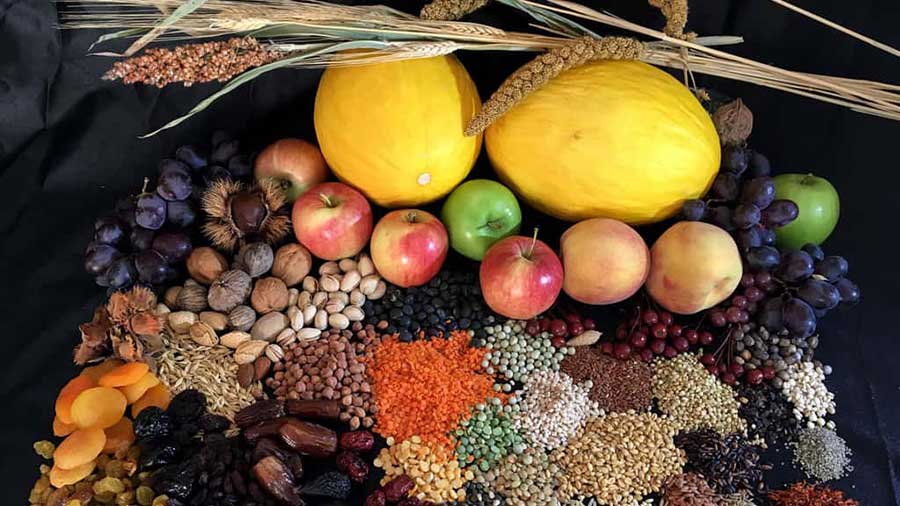
It is the Christmas season, and as the Three Wise Men came from the East, we look at Christmas along the ancient and modern Silk Road and how people along it will be celebrating – or not – during this special time of year. Like the Wise Men, we will head West, beginning with China…
China
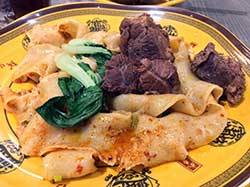
Christmas is not a part of traditional Chinese festivities, they begin at Chinese New Year, based on the Lunar calendar, which falls on January 22 and is the most important date in the Chinese festivities calendar. Families come together and exchange gifts. With the country being so huge, there are a myriad of different traditions, but we take a look at Xi’an, the ancient capital and for many travellers of the Silk Road, either the beginning, or end of their journey. Beef Noodles, made with a thick type of spaghetti-styled pasta – did Marco Polo bring the recipe back to Italy – are spiced up with chilli, garlic and Sichuan pepper, and provide a delectable taste, texture and substance – exactly what is needed after arriving in the city after months of travel.
Heading West, and having made it from Xi’an to Urumqi by skirting the Taklimakan Desert – a massive area so dangerously hot and dry that its vary name in Uyghur means ‘Go in and you won’t come back out’ we come to a food anomaly. Urumqi is often referred to as the most inland city in the world – which is why seafood is the prized item on the menu today. Ancient silk road travellers though would have had handfuls of dried raisins as a snack – grapes grow along the Karaz here, and roasted chunks of goat meat, washed down with butter tea. Again, after trekking around one of the most inhospitable places on the planet, that will lift the soul and satisfy tummies.
Kazakhstan
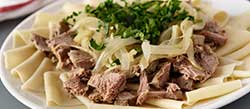
Kazakhstan is blessed with alpine mountains, grass steppes extending to the Caspian – and deserts. All of which are beautiful yet ecologically fragile – one reason why the nomadic culture persists here. For centuries, Kazakhs were herders who raised horses, sheep, cows, and Bactrian camels, and many, especially to the East, and the porous borders with China, Mongolia, and Russia, still are. Sustenance therefore tends to be cuisine that can be prepared at camp, or temporary homes. Beshbarmak is the national dish of Kazakhstan and served during special occasions. A type of stew, ingredients include pre-boiled horse, yak or lamb meat served with thin pasta sheets and a sauce (chyk) made from onions, meat broth, salt, and pepper. As the meat content comes from productive animals, Mares for horse milk and transport, Yaks and lamb for wool, being served Bashbarmak is a real honor. Shopping for meat in the local butchers? Horse is the meat with an orange fat content. A good stiff drink is needed to wash it all down, reduce the fatty richness and encourage the telling of old yarns and retellings of new adventures. Vodka is a recent Russian introduction, while wine is unheard off. Nomads aren’t around long enough to grow crops to produce beer. Instead, the Kazaks (and Mongolians) ferment Mares Milk, known in various regional countries as Kumiss, or Airag. It is prepared in the morning and increases in alcoholic content during the day. It tastes like alcoholic plain yoghurt, and on a cold winter’s day will warm your galloping heart.
Uzbekistan
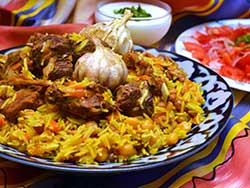
Uzbekistan was for centuries, and is becoming once again, a crucial crossroads along the ancient Silk Road. Landlocked, and therefore reliant on trade, its major culinary influences come from nomadic cultures but also Persia to the West and India to the South. Its more moderate attitudes come partially from regional intercourse and tolerance, while climatically its major cities could support permanent populations – which means crops can be grown and prepared year-round. Wine was not unknown here, some made locally but most imported from Persia and even as far away as Greece. In fact, the vine is an important food source along the Silk Road, grown on overhead trellis’s it can provide shade from the sun, enjoyed as a fruit, dried as raisins – ideal as a high-energy food while travelling on pack animals – and of course wherever grapes are grown, there is wine…
But the treat in Uzbekistan is Plov – a dish so popular it has quite literally, albeit under different names, has migrated across the world. Biyirani? Plov. Pilaf? Plov. Paella? Plov. You’ll notice it is influenced by southern cuisines, rice, rather than wheat based noodles are used as the main constituent part of the dish. There are about 200 different varieties of Plov, with the most special containing meats – usually lamb. Again, sacrificing a productive animal is a great honor. Uzbekistan was ruled by Hindu Kings for centuries which is why the cuisine refers to the south. What to drink? As wine was imported from Persia (see Iran, below) and the cuisine influenced by Persia and India, I’d go for an Indian Sula Wineyards Dindori Shiraz, as the grape varietal originates from Shiraz in contemporary Iran. It is now grown worldwide. If you can’t get the Sula, go for a hearty Australian Shiraz. Rahmat! (Cheers!)
Iran
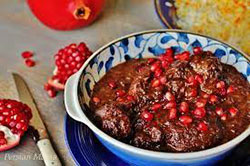
Persian cuisine and culture has had an immeasurable influence on contemporary cuisine, impacting not just India and as far away as West China but also the entire Mediterranean region. The Three Wise Men, bearing gifts of gold, frankincense and myrrh probably came from Persia, even today Iran is a significant gold mining country – it produced 7,600kg in 2020. Frankincense, a tree resin used as a highly aromatic incense, doesn’t originate in Iran but would have been traded there – along the ancient silk road – from plants grown in India, Saudi Arabia and North-East Africa and then transported to other markets by Persian traders as the dominant force at the time. Myrrh, another plant resin, also comes from similar areas.
But what would have sustained the Three Wise Men as they journeyed to Bethlehem – a distance of just under 2,000km? The winter dish of Iran is Khoresh Fesenjan a chicken stew laced with a walnut and pomegranate sauce, served with saffron rice. Decadent! Persia’s most famous poet, Omar Khayyam, mixed Muslim love for God with crafty interspersed references to wine. “Drink wine. This is life eternal. This is all that youth will give you. It is the season for wine, roses and drunken friends. Be happy for this moment.” For the Khoresh, given the sweetness imparted by the Pomegranates, a dry rose would suit. A Lebanese Rose, such as that from Château Kefraya would match, as would a Hebrew rose from biblical Galilee. These and similar wines are now freely available.
Christmas
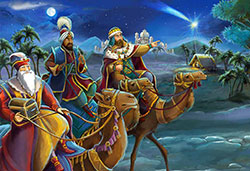
Here our journey ends, we have reached Bethlehem. But other silk road passages lead elsewhere, and to traditional winter cuisines in Turkiye, with Stuffed Melon with Chicken and Cashews the Christian Orthodox lands of Georgia, and smoked ham dishes along with Russian Salmon Pie and into Eastern Europe, and traditional festive dishes such as Baked Carp, and Roast Goose.
Wherever you are, and whatever your religion – Happy Christmas!
Chris Devonshire-Ellis has travelled throughout China and the ancient Silk Road for over 30 years. To subscribe to his regional business and investment articles, click here.
Silk Road Briefing will continue its Belt and Road Initiative coverage from Monday, December 26
Related Reading





